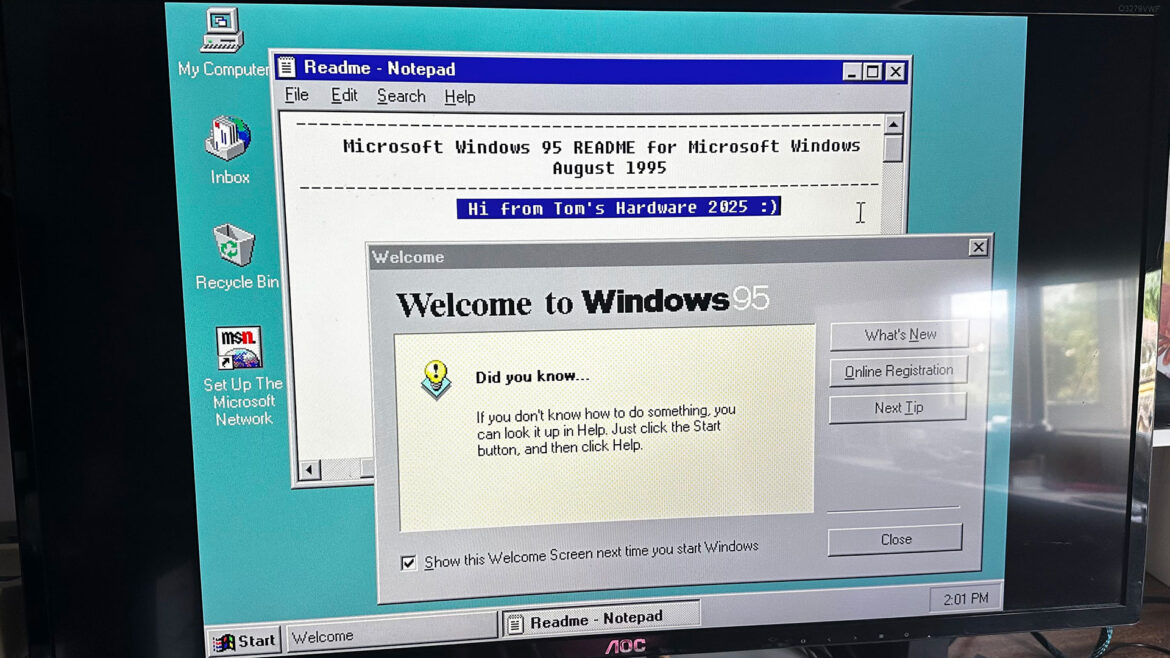Microsoft’s momentous Windows 95 operating system became available to the public on this day 30 years ago. Computing enthusiasts were queuing around the block at midnight launch events. Perhaps this was the first time an OS launch became a cultural event – one that was carefully primed by the launch a month earlier, and the Start Me Up advertising campaign.
Windows 95 – Start Me Up – Promo / Commercial (High Quality 720p) – YouTube
Watch On
Other welcome features that first became mainstream on PCs thanks to the introduction of Windows 95 include; the 32-bit preemptive multitasking architecture with task bar, plug and play hardware, support for long filenames, and many more.
You may like
System requirements
To boost Windows 3.1 migrations, Windows 95’s official requirements presented quite a low bar. Users should have an Intel 386DX processor, 4MB of RAM, a VGA or better display, and make sure to have 55MB of HDD space clear for the installation process.
Recommended settings, for those hoping to make proper use of the new multitasking capabilities, and internet features like MSN and Exchange were higher. For improved usability, Windows 95 would benefit from a 486 or better CPU, 8MB of RAM, an SVGA display, as well as more storage.
It is debatable whether this was the beginning of bloat. For some context, the contemporary Macintosh System 7.5.X required about half the fixed storage of Windows 95.
You can test Windows 95 RTM in an online VM, on PCjs Machines, using the link.
(Image credit: Future)
Windows 95 launch price and success
Windows 95 originally retailed in a box with between 13 and 15 1.44MB floppy disks. You could purchase a full installation version or an upgrade for Windows 3.1 systems. A CD distribution came with a boot floppy, as you would need DOS-level CD-ROM drivers to load before install.
PC enthusiasts at the time would have had to buy a new system with Windows 95 pre-installed or cough up $209, which adjusted for inflation brings us perilously close to $400 in 2025. Just for an OS…
Despite the entry price, Microsoft’s lavish advertising budget and promotional activities paid off. Sales revenue from the release reportedly hit $720 million on day one. Also, a million copies of the OS had been shipped by day four.
In 1996, Microsoft celebrated the one-year anniversary of Windows 95’s release with the claim that it had shipped 40 million units worldwide. By then, the software company could boast of 400 PC manufacturing partners, and that 4,406 software applications were supported.
Gaming and the web
Paving the way for the success to come, it was also noted that 10 of the 11 publishers of the top 20 PC game titles were onboard with Windows 95-based gaming. Moreover, the use of the web was accelerating, with Netscape and Microsoft both releasing their new browsers on 32-bit Windows.
Follow Tom’s Hardware on Google News to get our up-to-date news, analysis, and reviews in your feeds. Make sure to click the Follow button.

